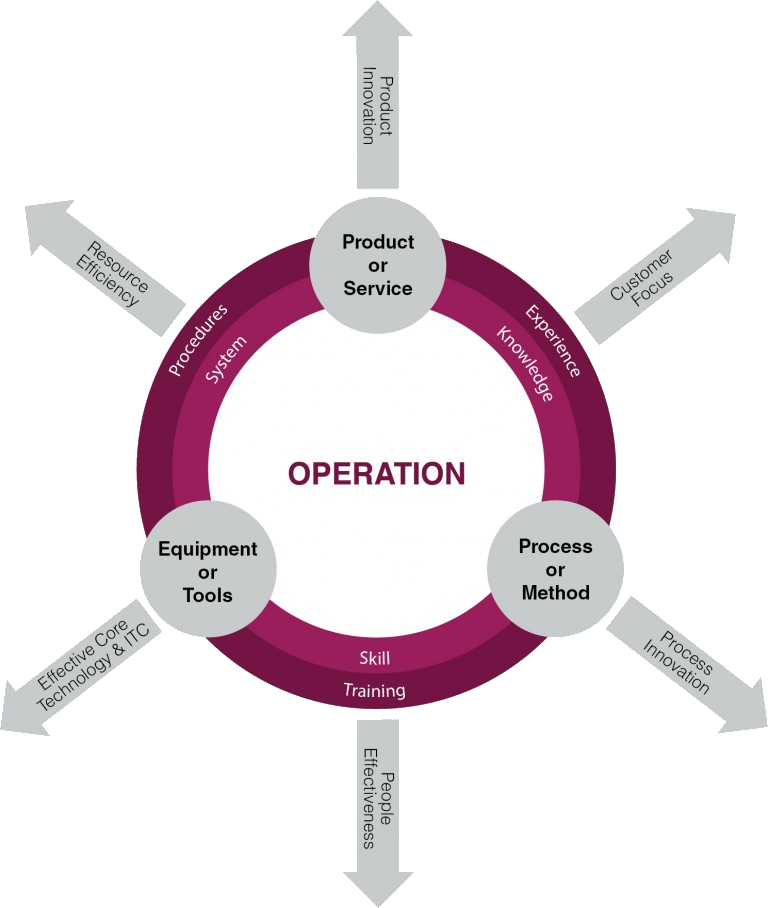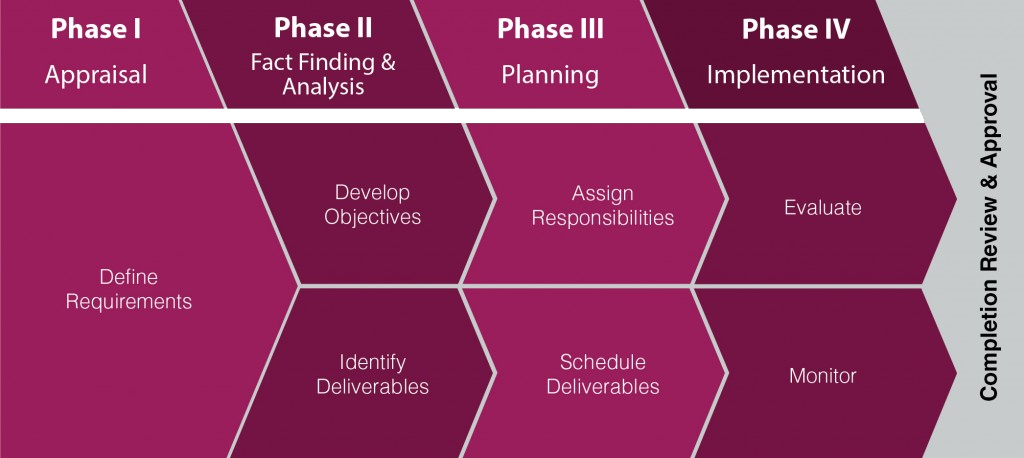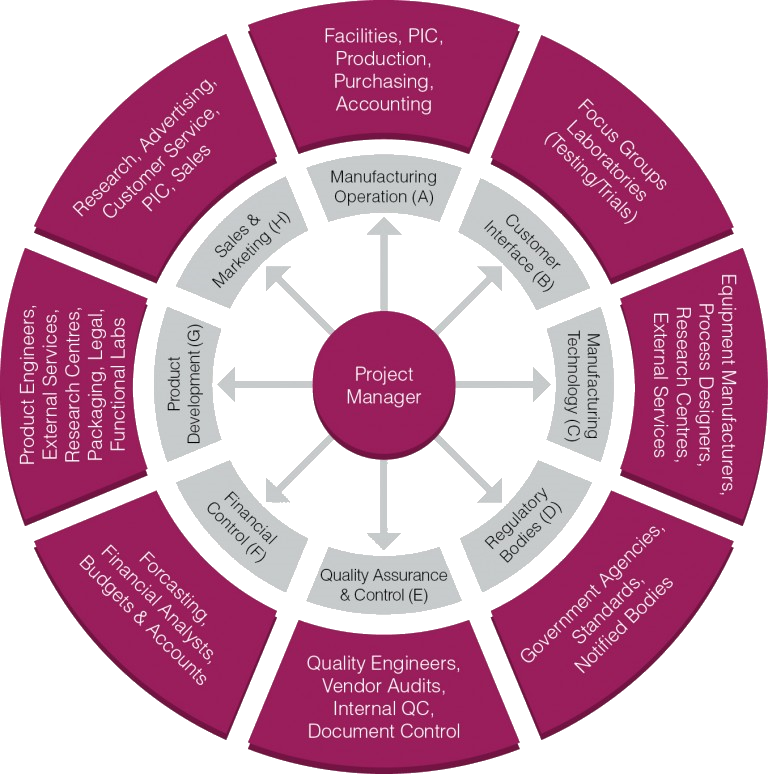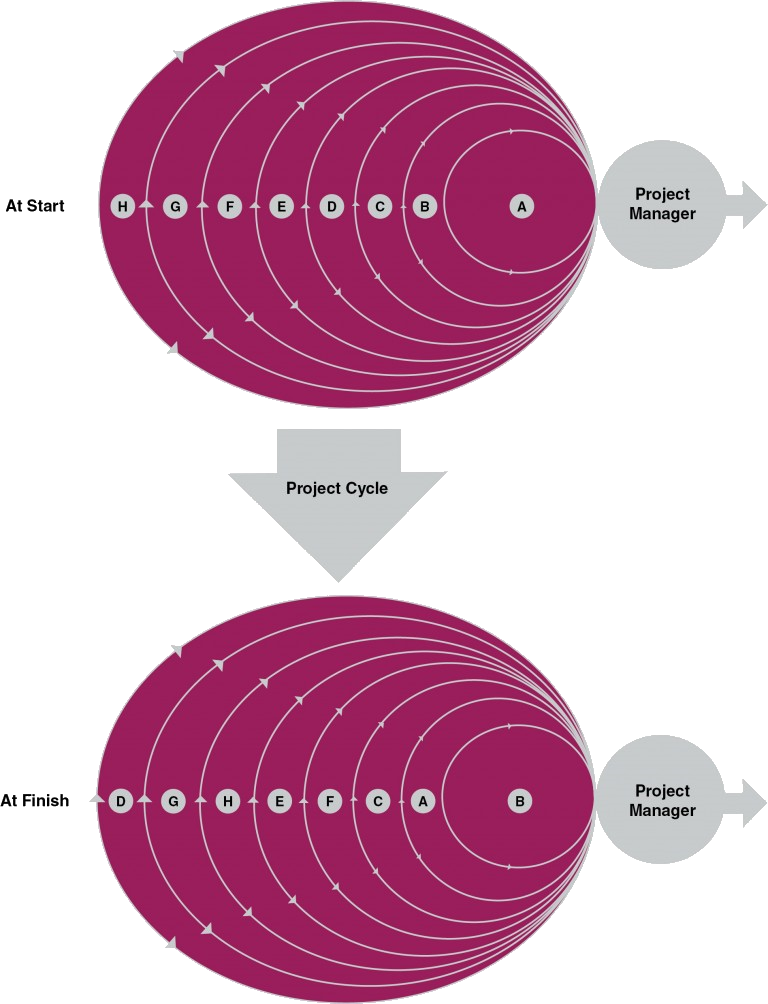 Equinox Technical Solutions
Simple Solutions to Complex Problems
Equinox Technical Solutions
Simple Solutions to Complex Problems

METHODOLOGY
The diagram below is an alternative representation of an operation with its essential elements, generally known

With an emphasis on Technological & Analytical solutions, our methodology is based on the analysis and strengthening of the three main elements and the links between them, which ultimately would result in achieving a well-balanced picture as shown.

PROCEDURE
The
PROJECT MANAGEMENT & MANAGEMENT PROCESSES
In parallel with well-established methods such as PRINCE (Project IN Controlled Environment), or PACE (Product And Cycle Time Excellence), or any other preferred method for managing Project/Programmes, where applicable, we recommend a dynamic project team structure rather than a static one.
In a static team structure (as below), contributors have an equal 2-way relationship (Pull) with the Project Manager (PM), and other team members, directly and indirectly throughout the project cycle time.
An Example of Static (Pull Method) Project Team Structure

In comparison, in a dynamic project team structure (see opposit) is more fluid and enables the PM to focus the tactical resources on the key activities of the project as and when required, supported (pushed) by the other members. Hence, a more efficient use of available expertise within the project structure is achieved.
An Example of Dynamic (Push Method) Project Team Structure
